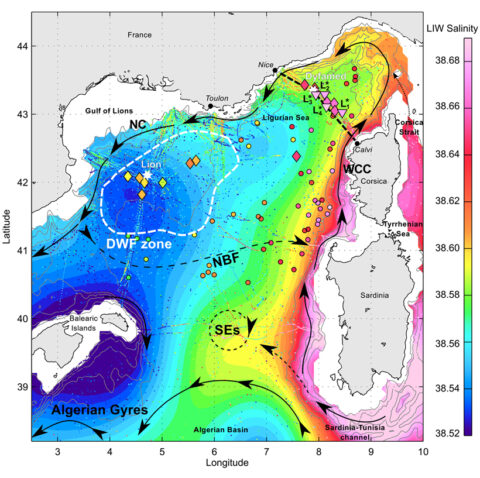Source: Journal of Geophysical Research: Oceans
Currents in the Mediterranean, like those in larger oceans, transport heat and salt in a process called thermohaline circulation. Scientists trying to understand the thermodynamics of the Mediterranean Sea, which affects the marine ecosystem and the carbon cycle, take great interest in elucidating the underlying forces that drive this phenomenon.

Bosse et al. report that small, long-lived vortices of swirling waters (submesoscale coherent vortices) may drive the movement of an important water mass, known as the Levantine Intermediate Water, found between 200 and 500 meters below the surface. The vortices are about 10 km across and can persist for a year or longer.
Using measurements of temperature and salinity taken by autonomous oceanic gliders surveying the Mediterranean Sea, the researchers predict that about 10 new vortices may form every year along the northwestern coast of Sardinia. The team concludes that the underwater anticyclones could be caused by offshoots in the Levantine Intermediate Water, which flows northward along the island’s continental slope.
These vortices propagate out from the slope, creeping west at a few kilometers per day and spreading warmer, saltier waters into larger Mediterranean basins—playing their part in a complex confluence of Sun, Earth, air, and water that ultimately affects marine ecosystems and the climate we live in. (Journal of Geophysical Research: Oceans, doi:10.1002/2014JC010263, 2015)
—David Shultz, Freelance Writer
Citation: Shultz, D. (2015), Underwater gliders find swirling vortices of warm, salty water, Eos, 96, doi:10.1029/2015EO037287. Published on 13 October 2015.
Text © 2015. The authors. CC BY-NC 3.0
Except where otherwise noted, images are subject to copyright. Any reuse without express permission from the copyright owner is prohibited.
